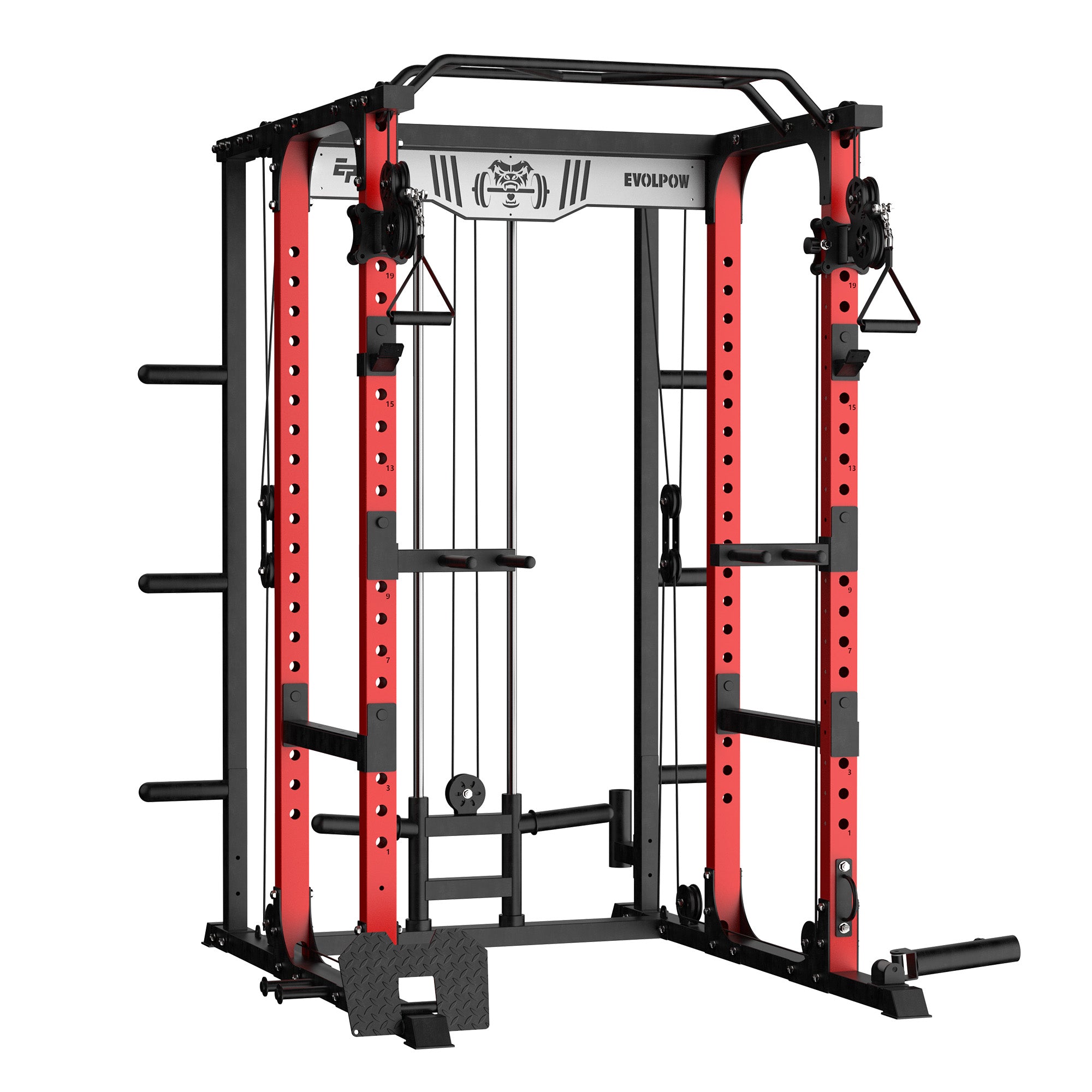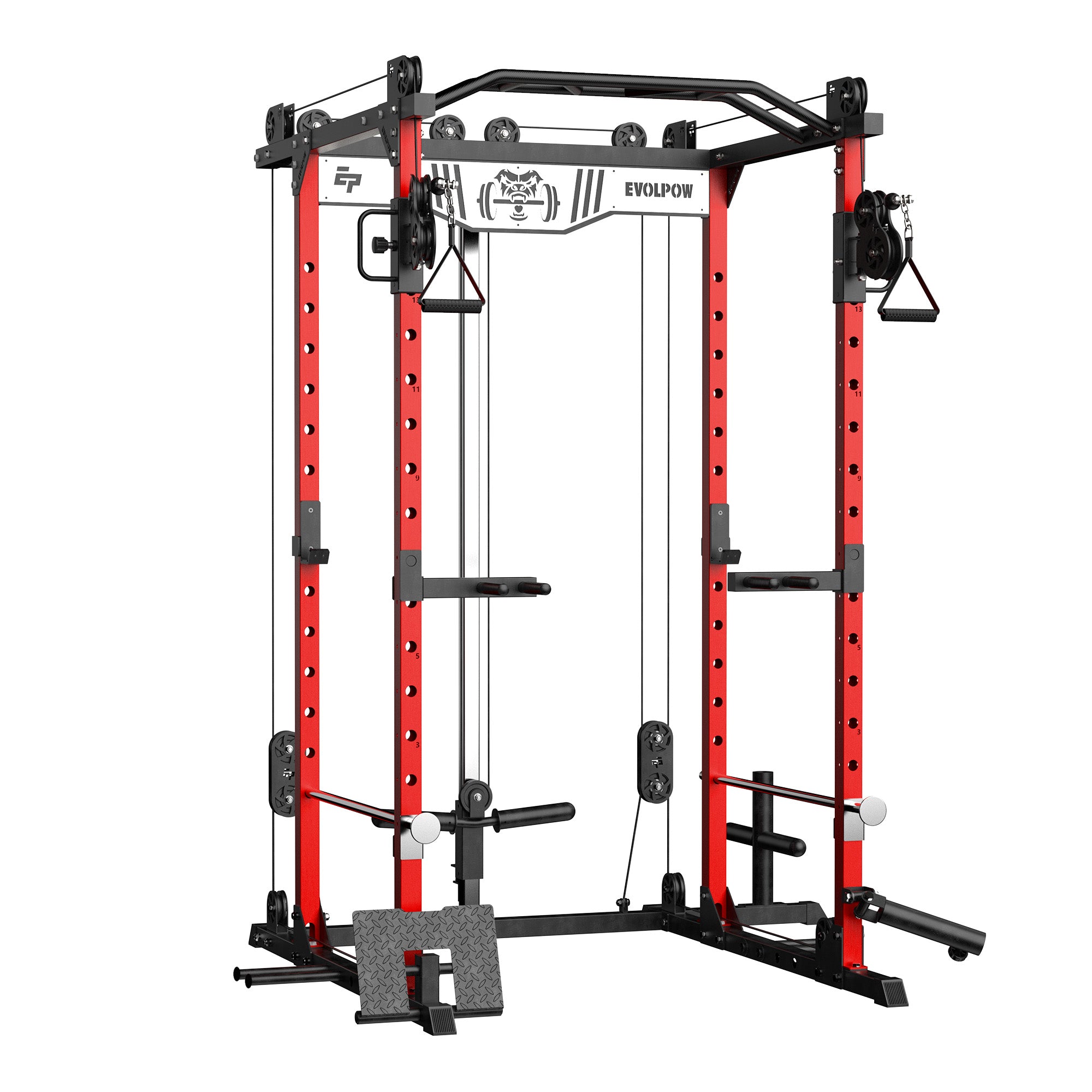Why Your Bench Matters More Than You Think
When building a home gym, most people focus on space-saving, load capacity, and ease of use. But what often gets overlooked is the importance of the bench, a key piece of home gym equipment that shows up in more workouts than even dumbbells or barbells. From bench presses and shoulder presses to incline rows, a solid bench plays a central role in your training. Whether you need a versatile adjustable weight bench to target muscles from multiple angles or a fixed design for precision and stability, the right bench can dramatically improve your performance, efficiency, and results.
Shop: https://www.evolpow.com/collections/benches
CONTENT
Adjustable Bench
Flat vs. Adjustable Bench: What’s the Difference?
Key Features to Consider
Training Goals: Match the Bench to Your Style
Why Evolpow BEB Bench Stands Out
ADJUSTABLE BENCH
An Adjustable Bench, also known as an Adjustable Weight Bench, is a popular type of equipment used in resistance training. Due to its versatility and mobility, it’s a common feature in any well-equipped home gym. Typically, the backrest on these benches adjusts between 0 to 90 degrees, while the seat adjusts from 0 to 30 degrees, allowing for a wide range of movements from flat bench presses to seated shoulder presses.

FLAT VS. ADJUSTABLE BENCH: WHAT’S THE DIFFERENCE?

Basic workout benches fall into two categories: flat benches and adjustable benches. As the names suggest, flat benches feature a fixed horizontal backrest, while adjustable ones offer multiple incline and decline positions.
Flat benches are great for foundational exercises such as bench presses, dumbbell flyes, and push-ups on the bench (decline chest). However, they offer a limited variety when it comes to strength training or bodybuilding training.
Adjustable benches allow users to target the upper chest, shoulders, and even parts of the back by changing angles. This versatility not only enhances training efficiency but is also ideal for supersets, offering various stimuli to muscles in fewer sets. Still, flat benches tend to offer better stability, so choosing a safe and reliable adjustable weight bench is essential.
KEY FEATURE TO CONSIDER

Angle Range & Stability
Most adjustable weight benches offer backrest angles ranging from 0 to 90 degrees and seat adjustments from 0 to 30 degrees. For example, when performing heavy incline presses, having both the backrest and seat at a supportive angle prevents sliding and ensures safety. Thus, structural stability is critical.
Padding & Comfort
The cushioning of the bench is another important factor. If it's too soft, it may lack the necessary support, leading to imbalance during lifts, especially if one side of your body is stronger than the other. On the other hand, overly hard padding can create discomfort during exercises, making it hard to focus. A firm yet comfortable bench is the ideal choice.
Weight Capacity
Weight capacity is a must-consider. Most benches support between 440 lbs and 2200 lbs (200kg and 1000kg). For beginners, a lighter bench might suffice initially, but as training progresses and load increases, a bench with insufficient weight capacity becomes a safety hazard. Investing in a solid bench ensures long-term utility and safety.
Commercial and home gym equipment differ significantly in cost and build. Commercial benches are made to withstand frequent and varied usage from a wide range of users, while home gym benches cater to more personalized and consistent training patterns.
Footprint & Storage
In apartment-style home gyms, space becomes a premium concern. For those with limited room, compact and storable benches are essential.
TRAINING GOALS: MATCH THE BENCH TO YOUR STYLE
Bodybuilding
Bodybuilders focus on muscle definition and symmetry. With their need for isolation exercises, having a bench that offers multiple angles is crucial for hitting muscle fibers from different directions.
Strength Training
Powerlifters aim to lift maximum weight. As such, their main concern is stability and load capacity. A robust and heavy-duty bench ensures safety when handling extreme weights.
Functional Training
Functional fitness athletes prioritize agility, coordination, and general body strength. They may also use the bench for step-ups, elevated lunges, and mobility drills. For this group, a stable, anti-slip bench that supports bodyweight movements is ideal.
WHY EVOLPOW BEB ADJUSTABLE WEIGHT BENCH

The BEB Adjustable Weight Bench from Evolpow is a standout choice for home gym equipment. It takes up less than 1 square meter and includes transport wheels for easy movement. The backrest has 8 adjustable positions (-15 to 90 degrees), and the seat offers 4 levels (-15 to 30 degrees). This wide range allows users to perform a full spectrum of chest, shoulder, and back exercises. With a maximum weight capacity of 1300 lbs, it offers outstanding stability and durability.
Whether you're a beginner setting up a new home gym or a seasoned lifter upgrading your training setup, the BEB Adjustable Weight Bench is a reliable companion for effective resistance training.
CONSTURCTION
The Bench is Not Just a Bench
An adjustable bench may seem simple, but it's a key component in any effective training setup. It enhances workout efficiency, supports proper form, and helps target muscles more precisely.
A well-designed bench improves safety, supports heavier lifts, and reduces injury risk, allowing for long-term progress. Choosing the right bench isn’t just about comfort; it’s an investment in better performance and consistent results.
FAQ
Q: Do I need an adjustable bench?
A: For bodybuilding enthusiasts, an adjustable weight bench is essential. Its versatile angle settings help users precisely sculpt and define their muscles with greater detail.
Q: What kind of workout bench do I need?
A: The bench has a wide range of uses, including seated shoulder presses, seated lateral raises, flat, incline, and decline bench presses, incline rows, and single-arm rows. It effectively trains the chest, shoulders, and back. With the development of multifunctional equipment, many exercises now incorporate the bench as an essential support tool.
Q: Is a 30 or 45 bench press better?
A: This depends on the type of training we are doing. Generally, the angle refers to the incline bench press, which targets the upper chest. The greater the angle, the more the upper chest muscles are engaged. However, as the angle increases, the front deltoids also get more involved, which means the weight we can handle decreases. Therefore, when aiming to train the upper chest with heavier loads, it’s recommended to keep the incline angle below 45 degrees for better stimulation of the upper chest.
REFERENCE
https://startingstrength.com/article/the-importance-of-using-safeties-in-the-squat-and-bench-press
https://startingstrength.com/training/the-incline-bench-press-vs-the-lat-machine
https://www.youtube.com/watch?v=ySXlkacQwDs
https://www.youtube.com/watch?v=81vwdhlD8dc
https://www.youtube.com/shorts/cE2apszIVLA






